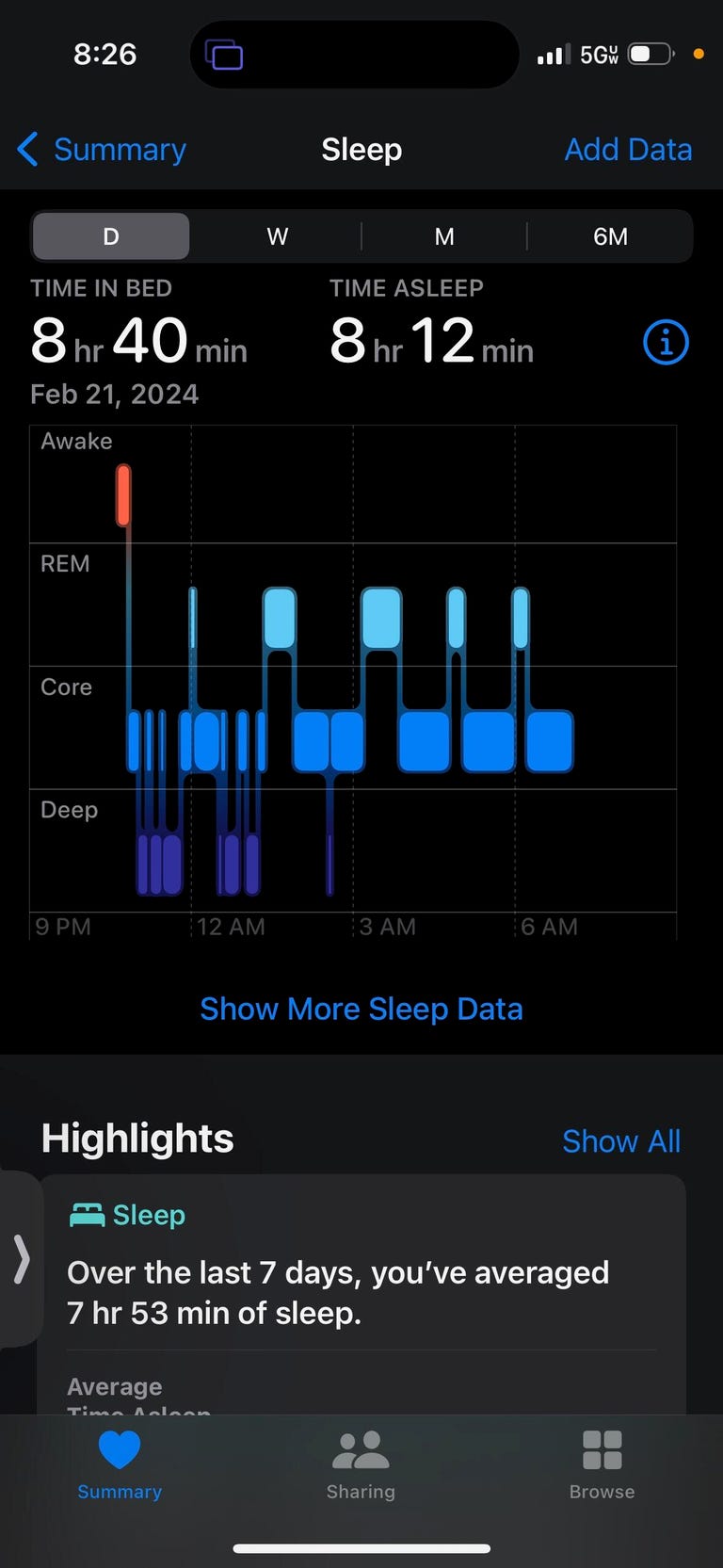You might find this hard to believe, but getting the recommended eight hours of shuteye each night doesn’t mean it’s the quality sleep your brain and body need. That can feel frustrating, especially if you’re making it a point to go to bed early, but the fact is, if you’re still tired or groggy after waking up, it could be a sign that you’re not getting the sleep quality you should be getting.
However, as time has passed and technology has evolved, it’s become much easier to quantify how good or bad our sleep patterns are. With smart beds, sleep trackers and wearables like wristbands and rings, we’re able to track and monitor our sleep in a way that we can analyze and use it to benefit. For example, each morning, you can review your heart rate, breath rate, and sleep graphs with information about how much light, deep and REM sleep you had the night before. All that data only makes sense if you know what it means and what you aim for.
If you want to learn more about sleeping patterns, here’s how to decode your sleep cycles to make the most of your shut-eye.
Read more: I Went to Sleep with a Robot to Get Better Sleep. This is What Happened
What are sleep cycles?
Humans sleep in cycles. The best known is REM, which stands for rapid eye movement because your eyes move rapidly during this stage of sleep. Scientists and researchers generally divide the cycles into two broad categories: non-REM and REM sleep. I’m going to break down non-REM sleep into two further categories that are often used by sleep trackers.
Light sleep
Light sleep is the beginning of your sleep cycle and your body’s way of winding down. Breathing, heart rate and muscle changes prepare your body for the deeper sleep to come.
Light sleep is broken down into stages 1 and 2. The first stage is simply the act of transitioning from being awake to being asleep. It makes up less than 3% of your nightly sleep cycles.
Stage 2 is where light sleep gets to work. When you are fully asleep, your brain activity slows but has bursts of electrical activity. Neuroscience research suggests that these spurts of electrical activity are a crucial part of your brain’s process of transferring information from short- to long-term memory. That’s why many scientists agree that sleeping after studying or learning new material helps you retain information at a higher rate.
Most people spend more time in stage 2 during long periods of sleep than any other stage, and that’s a good thing since it’s such an important part of brain health and emotional processing.
Read more: Light Sleeper? 4 Reasons Why and 5 Ways to Sleep Better
Deep sleep
Deep sleep is often confused with REM sleep, but the two are actually different. Deep sleep is the part of your sleep cycle in which your body recovers from the day. During deep sleep, your body secretes growth hormones associated with cellular repair and rebuilding.
When you get enough deep sleep, you wake up feeling refreshed. Without enough of it, you feel tired even if you have had a full night of rest.
Typically, you’ll see deep sleep on your sleep-tracking devices in the first half of your night. It happens in relatively long segments while your heartbeat and breathing slow to their lowest levels. You need about 1.5 to 2 hours of deep sleep each night.
This is also the stage of sleep when it’s most difficult to wake up. Deep sleep is as important as REM when it comes to physical rest, so keep an eye on this stage if you’re tracking your sleep patterns.
Read more: Need a New Bedtime Routine? 8 Tips for Better Sleep

Eight Sleep Pod 3 graphs REM, light, deep and awake segments.
REM sleep
Perhaps the most famous of the sleep cycles, REM sleep is interesting and almost the stuff of sci-fi. Most people experience REM sleep around 90 minutes after falling asleep.
REM sleep goes even deeper into brain recovery, dreaming and processing memories and emotions. This is the sleep stage in which your eyes move rapidly. If you’ve ever caught your dog or cat in a REM stage, you’ll recognize the darting eyes.
Your brain waves in REM sleep are closer to wakefulness than deep sleep, and your breathing becomes irregular and speeds up. Blood pressure and heart rates also increase to near-awake levels in REM sleep.
It’s no surprise that with so much near-wakefulness, this stage is when most of your dreaming happens.
Fun fact: During REM sleep, your arm and leg muscles are temporarily paralyzed by two brain chemicals, stopping you from physically acting out your dreams — like accidentally punching your partner instead of that alien bad guy.
Why it matters
You could follow in the footsteps of countless generations before us — fall asleep without any trackers and simply trust Mother Nature. I encourage this approach, especially if analyzing large amounts of data about your body doesn’t bring you peace of mind.
If you’re interested in sleep data, understanding and correlating how you feel with how well you progress through the sleep stages can help you make informed decisions about your bedroom environment or schedule.
Read more: Eight Sleep Pod 3 Cover Review: The Coolest Accessory for Hot Sleepers




















+ There are no comments
Add yours